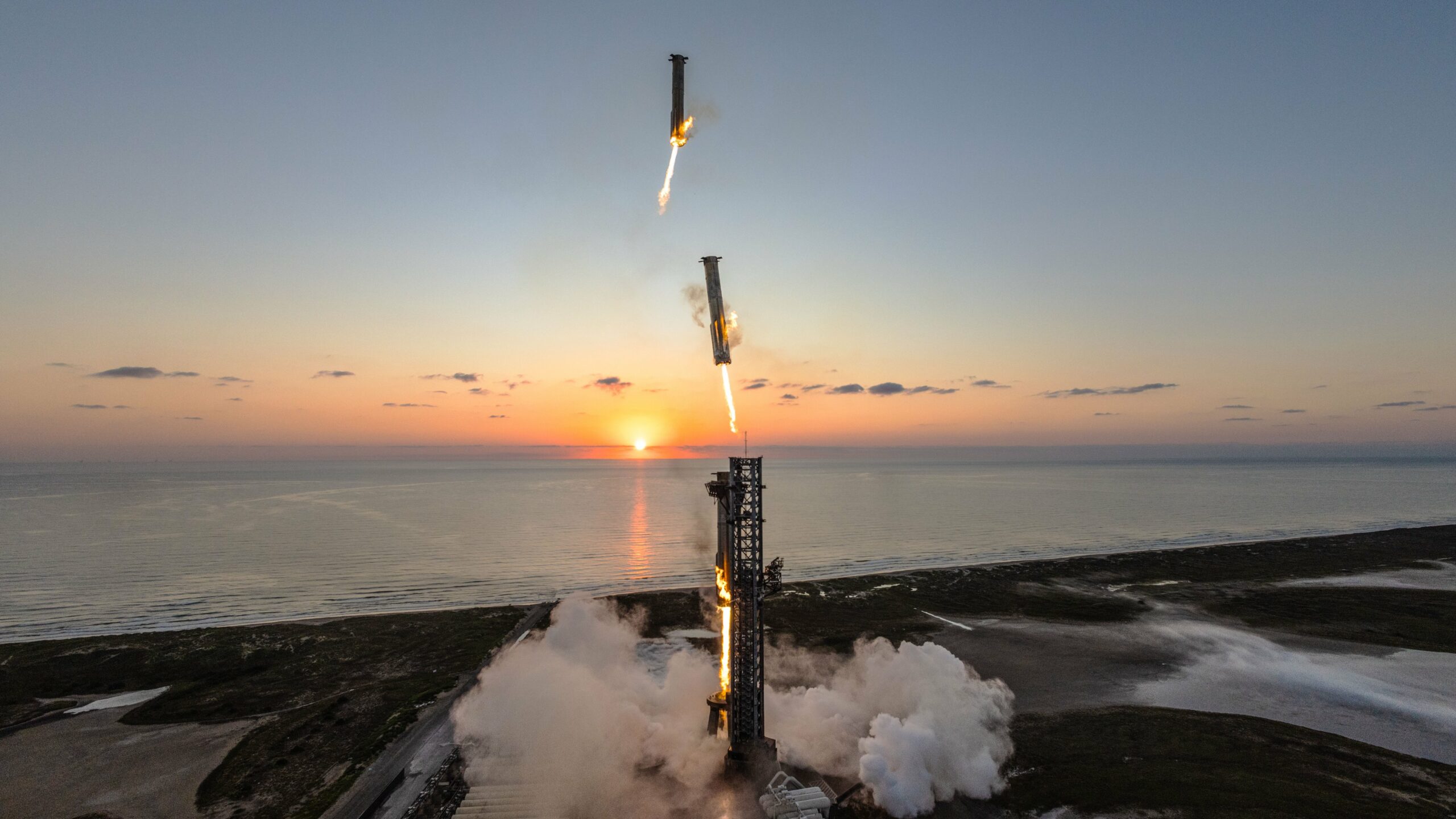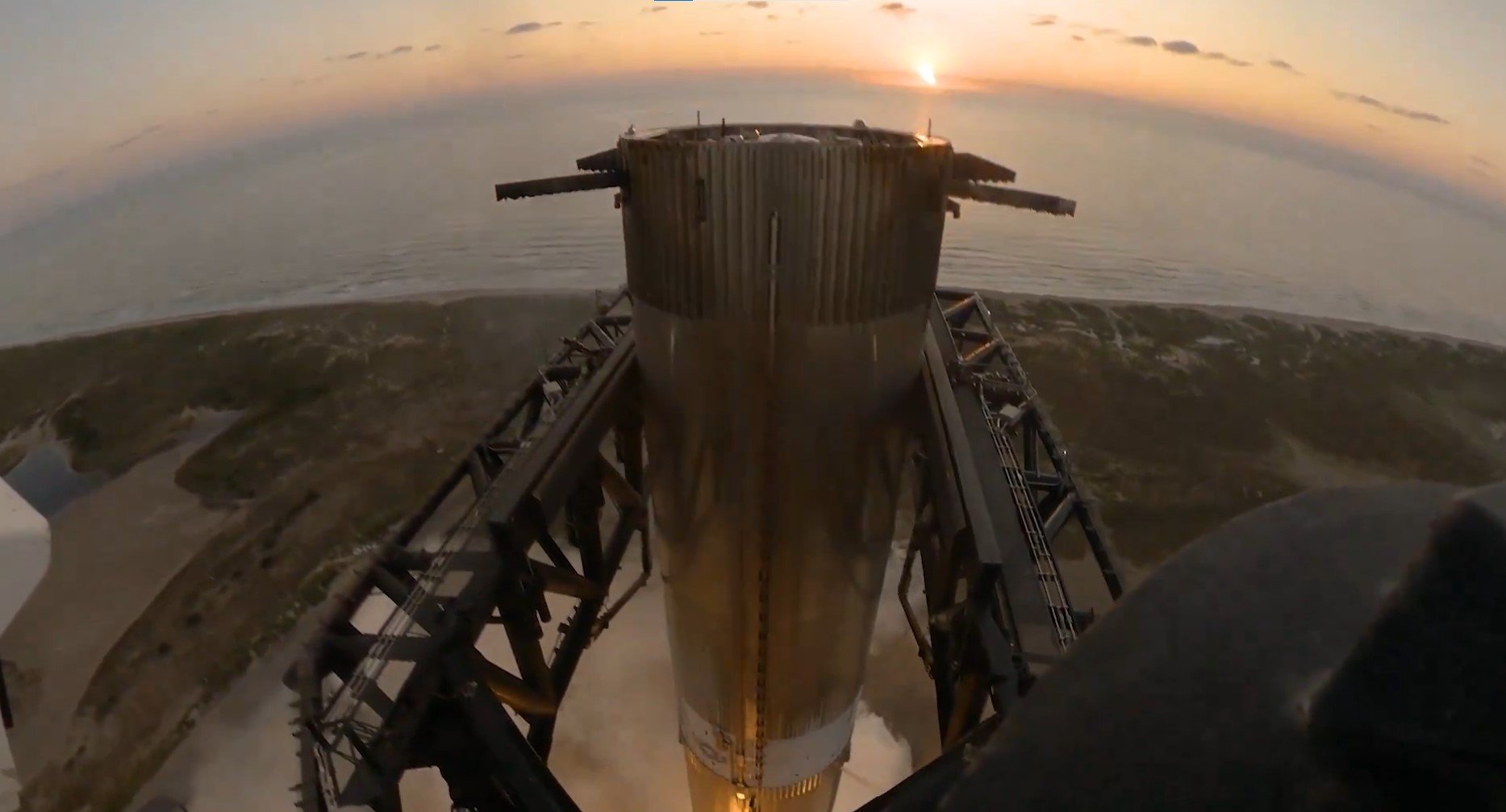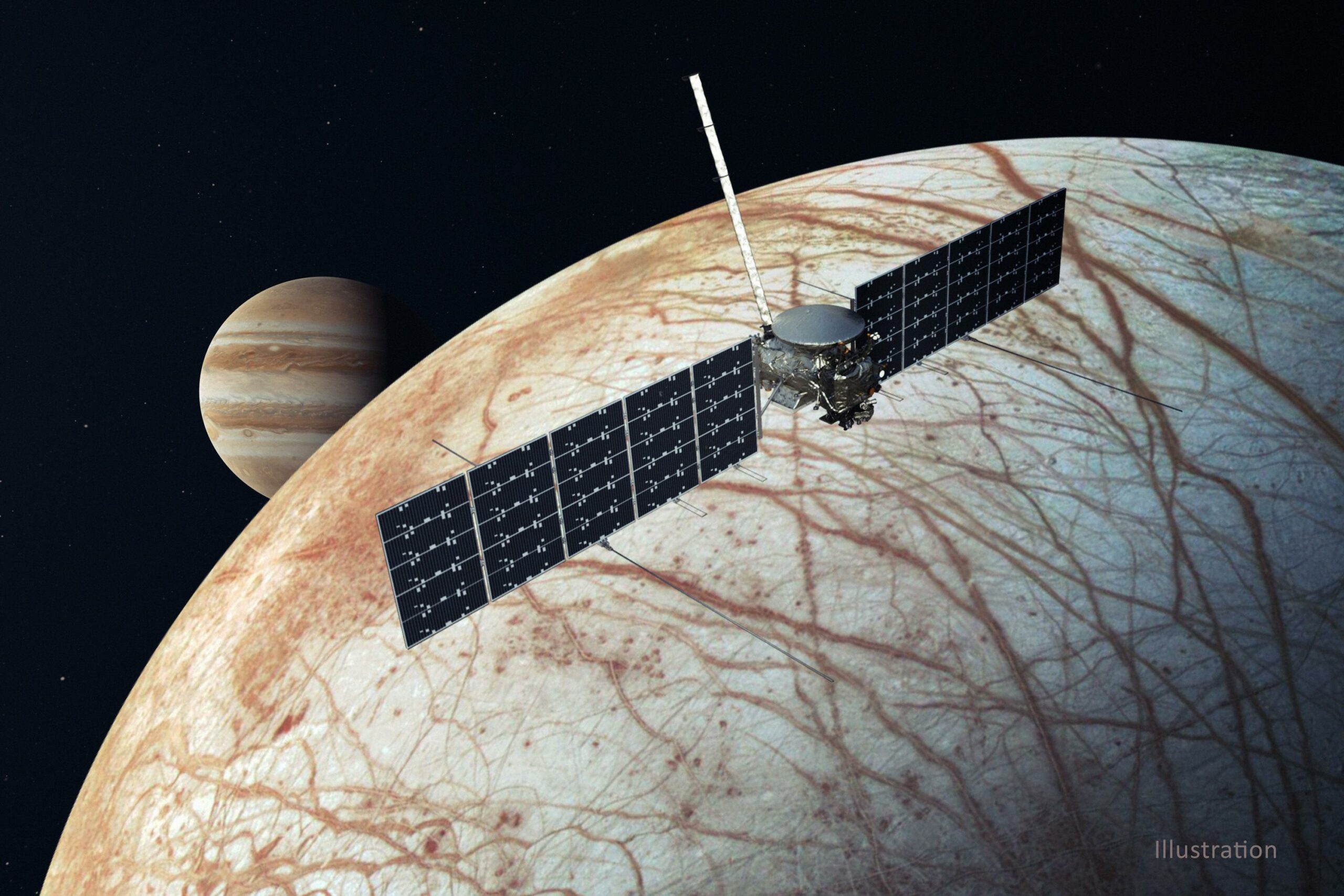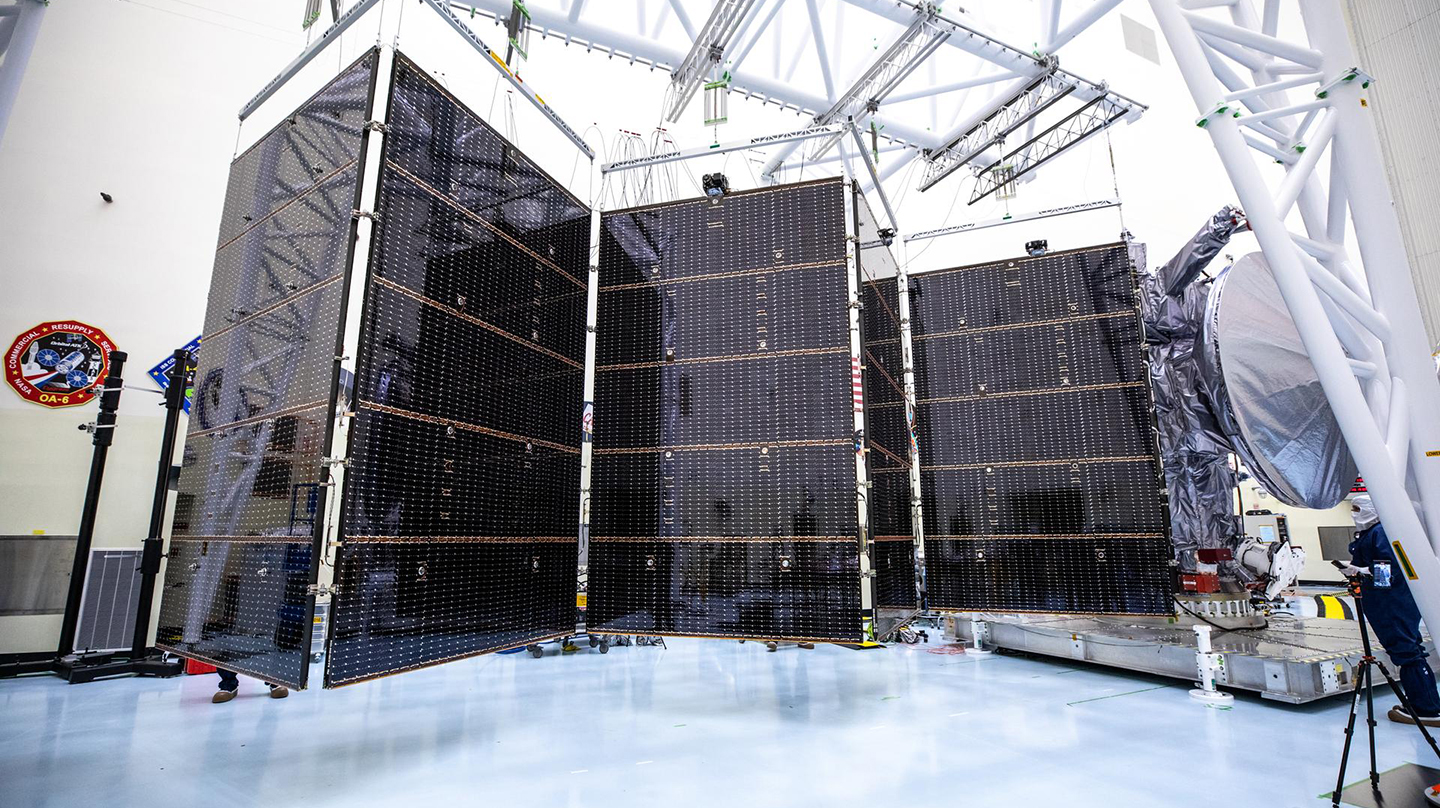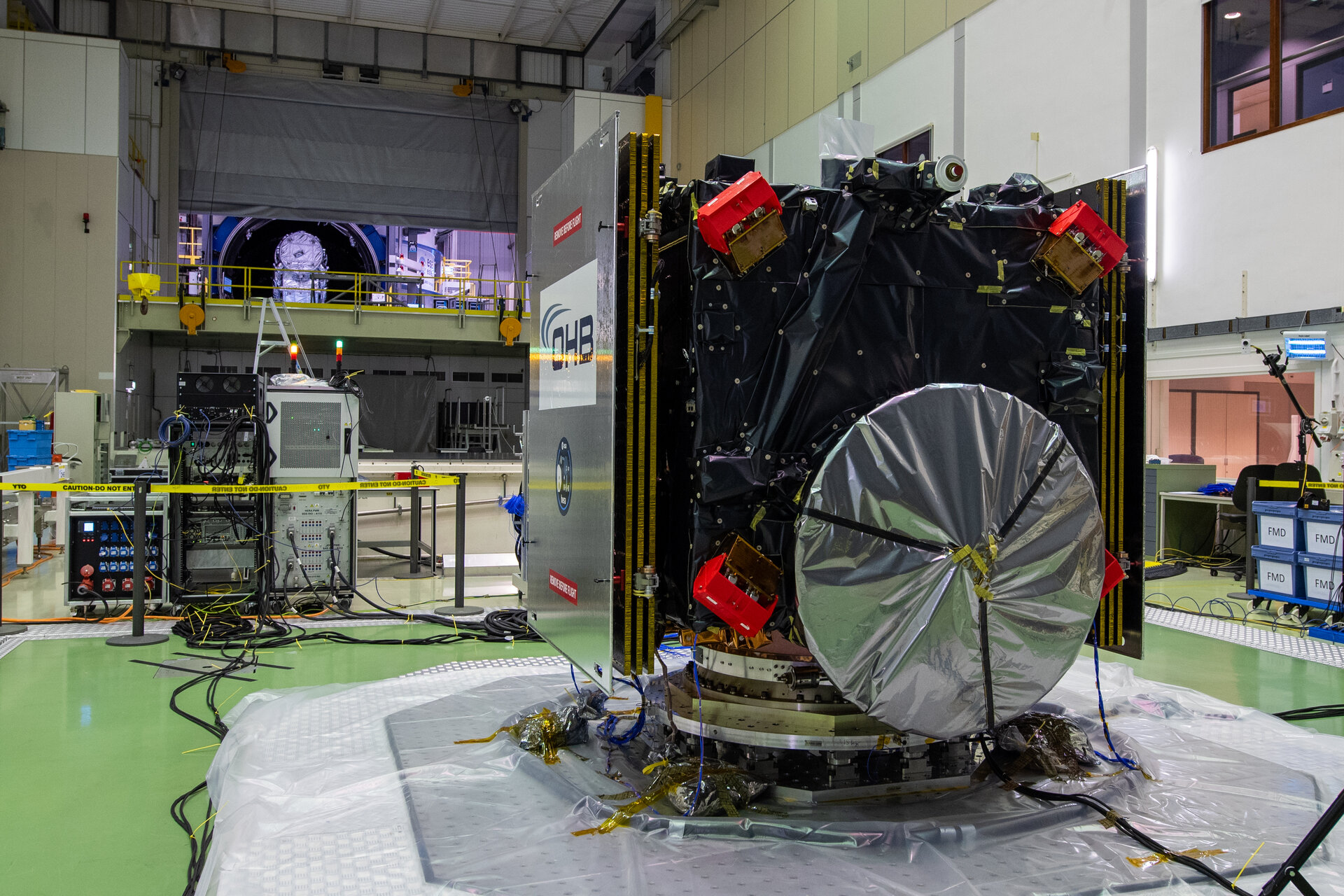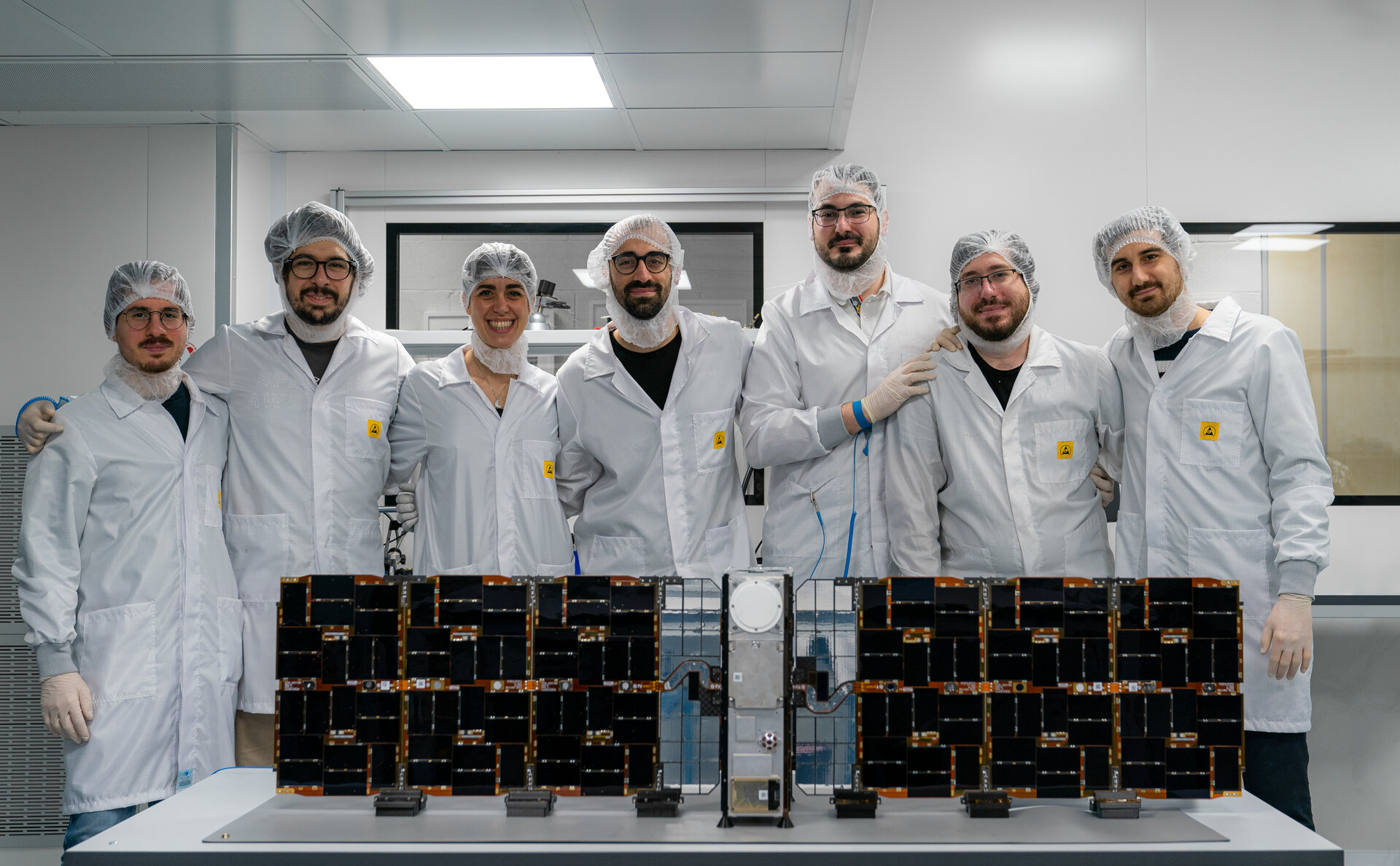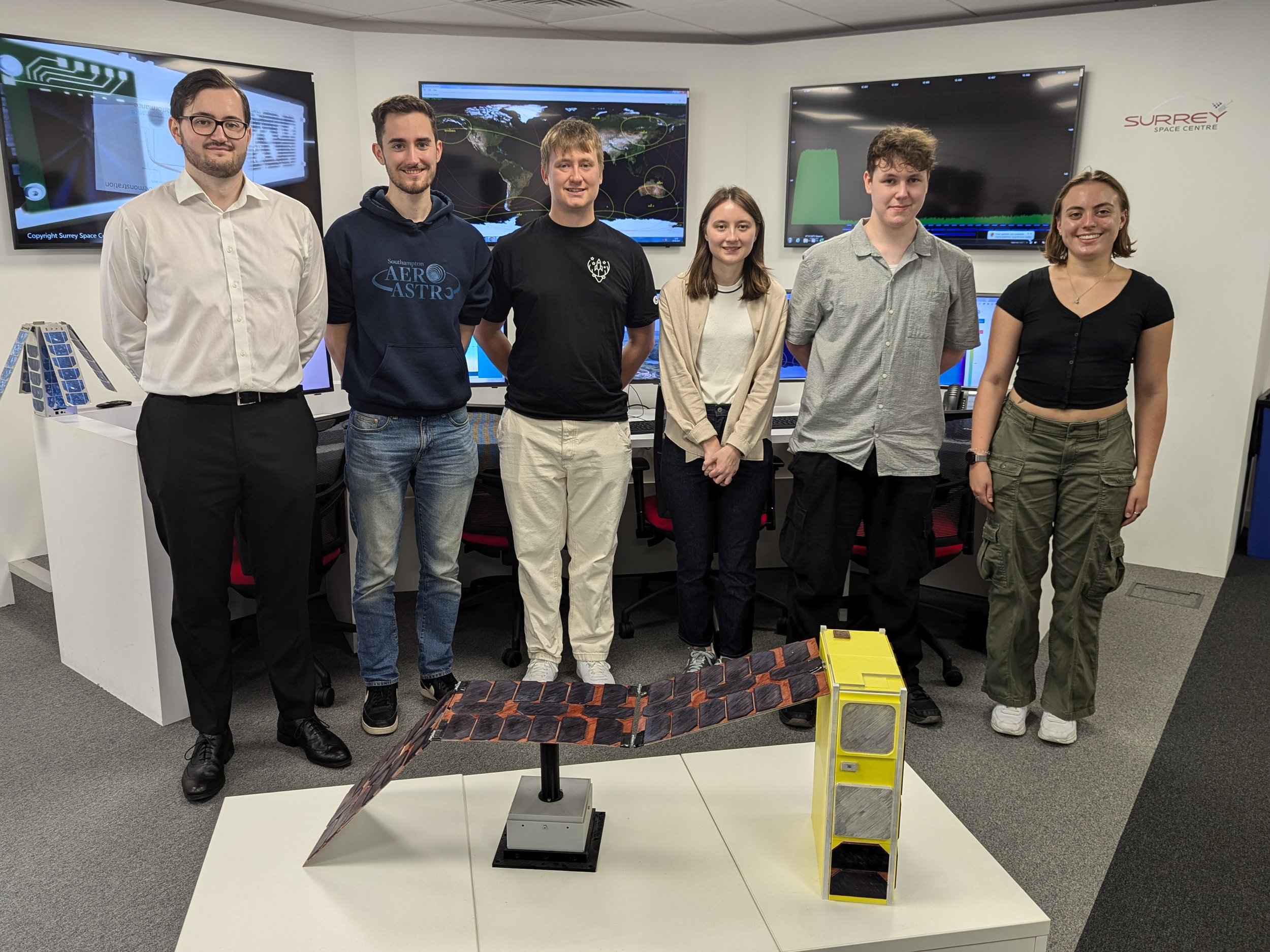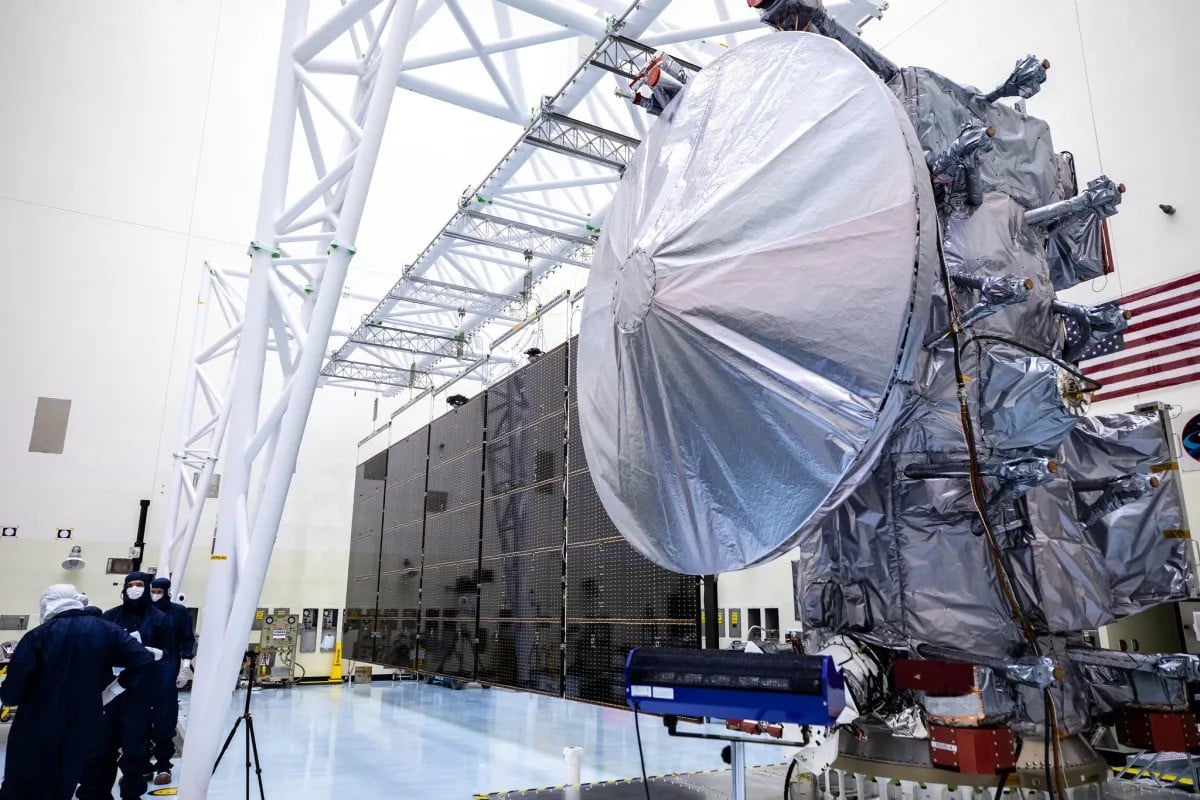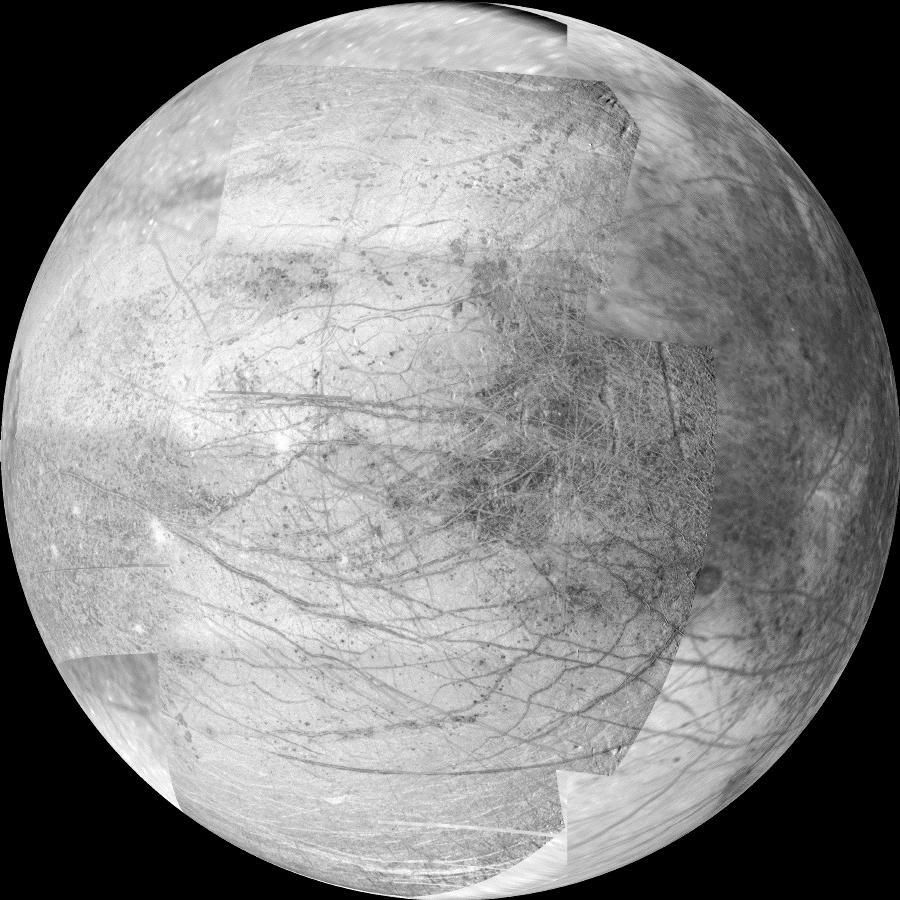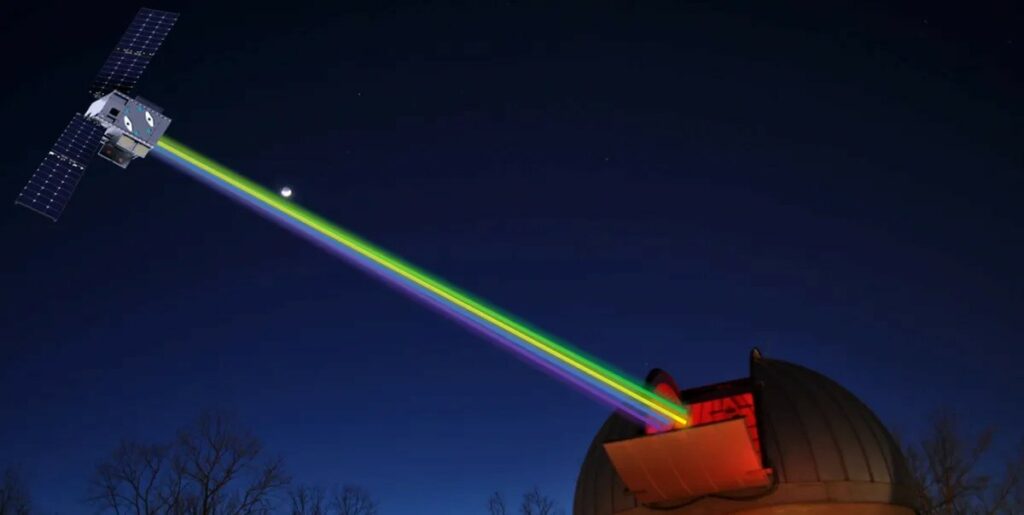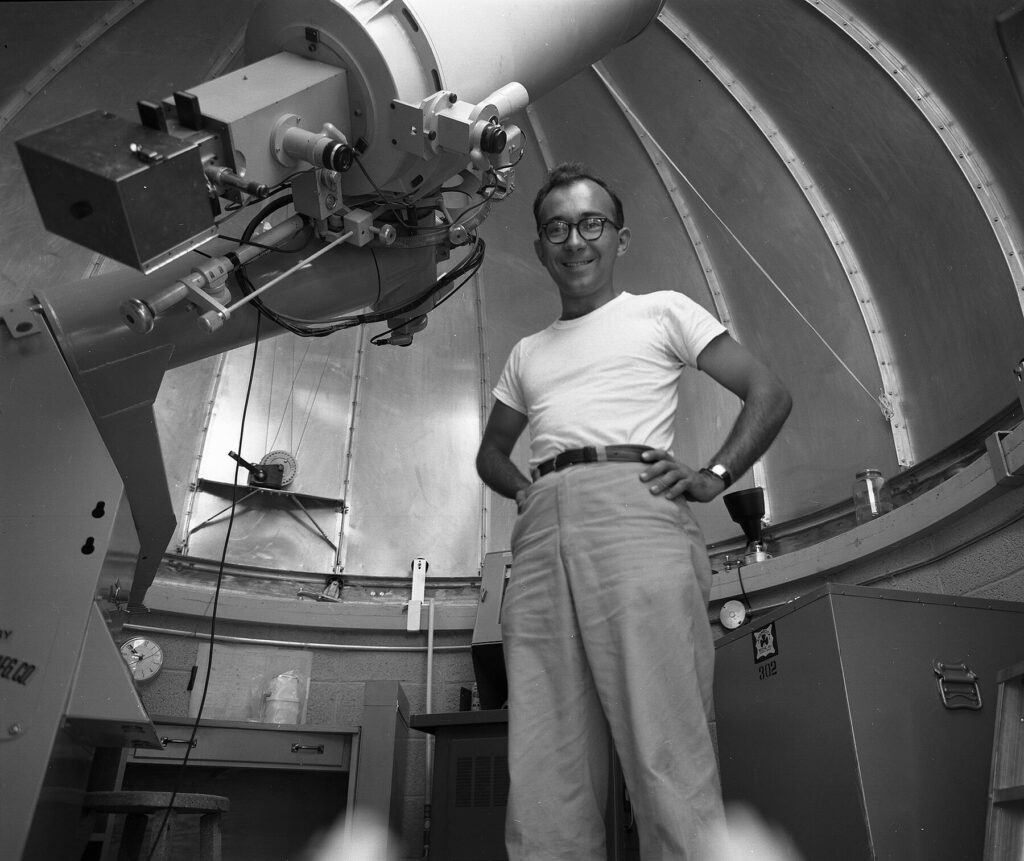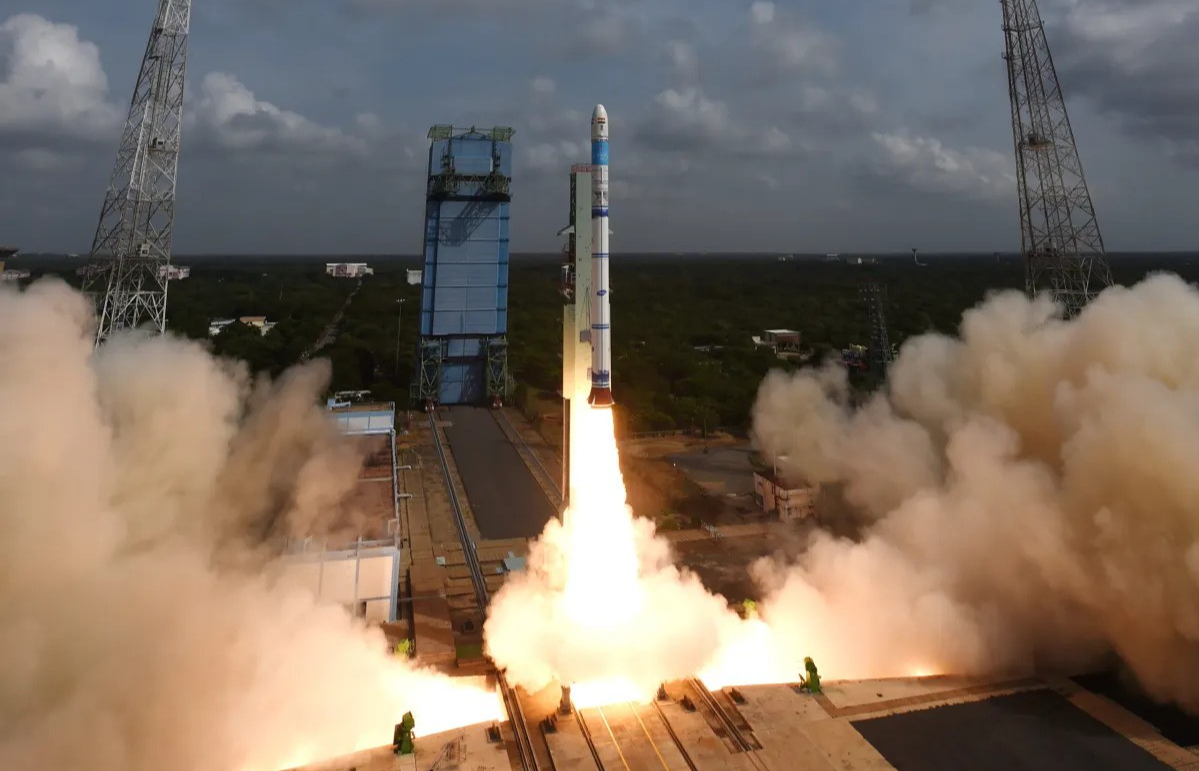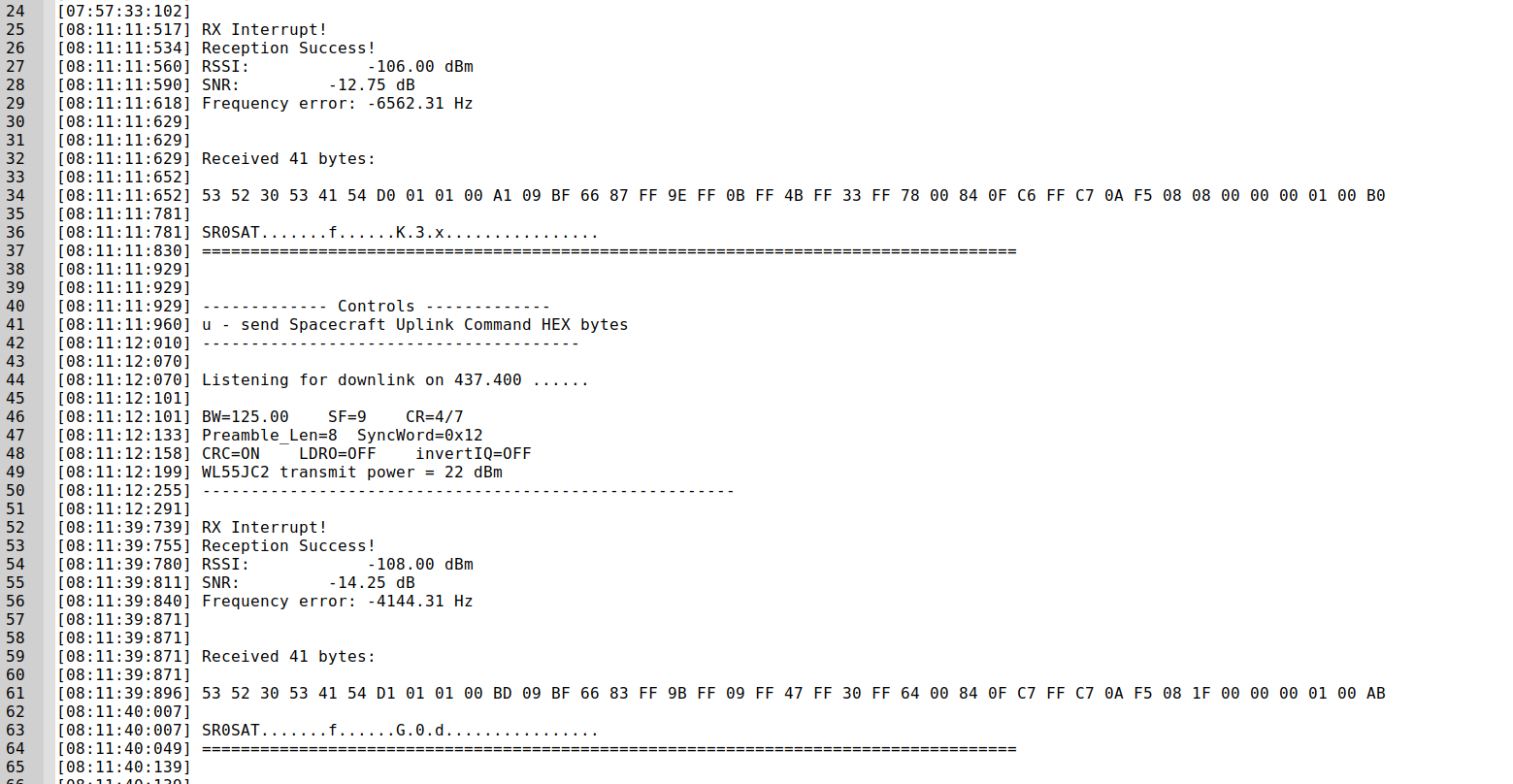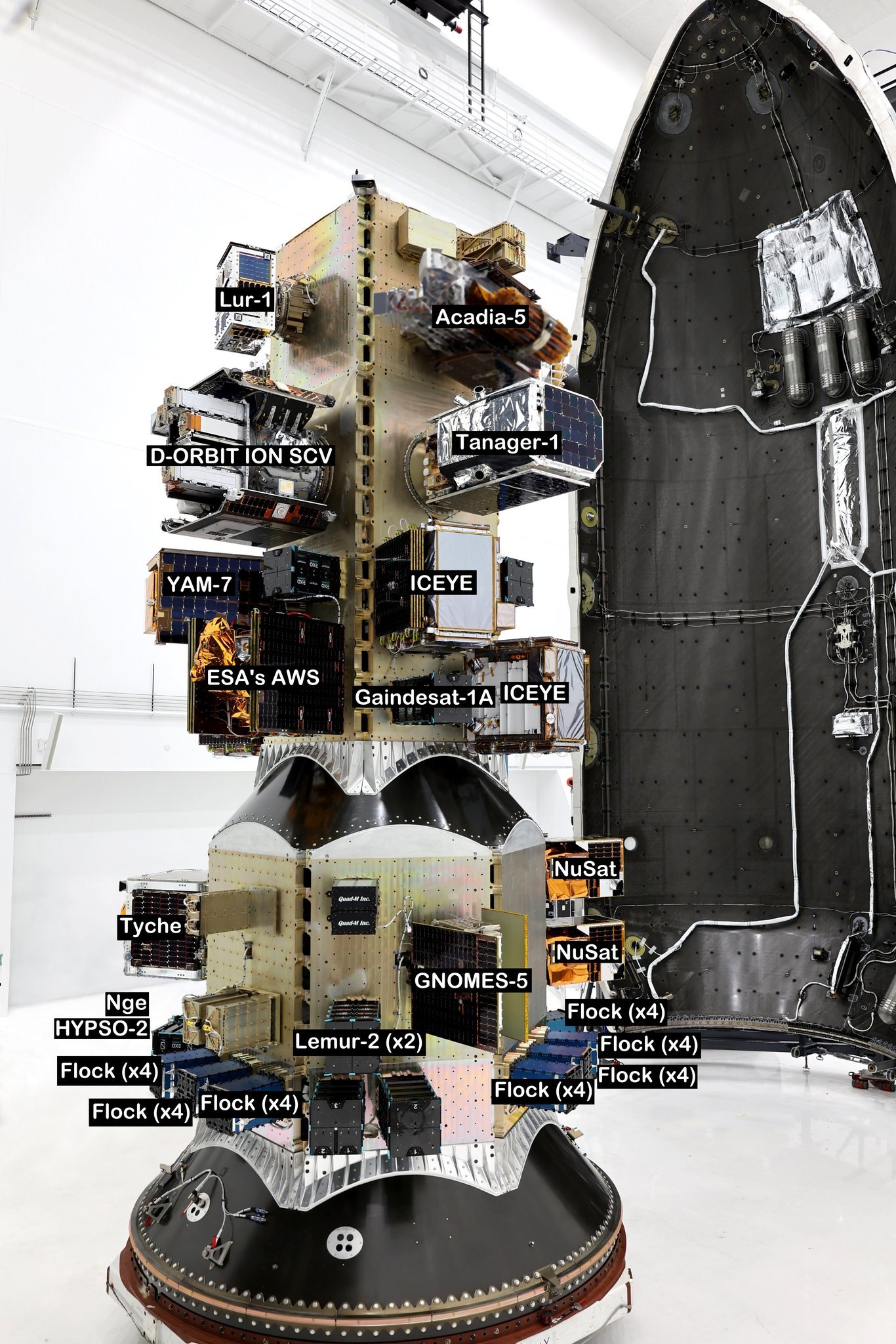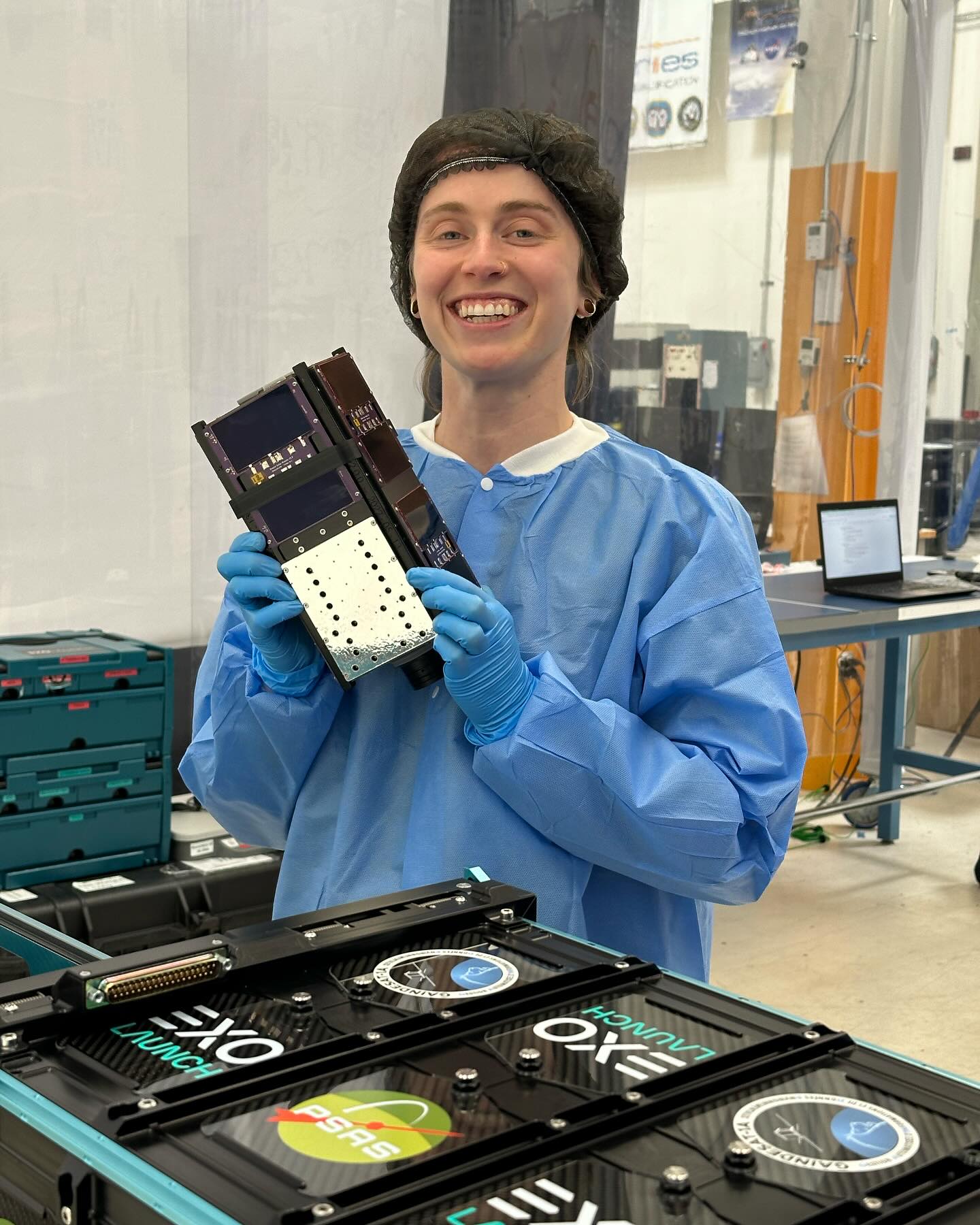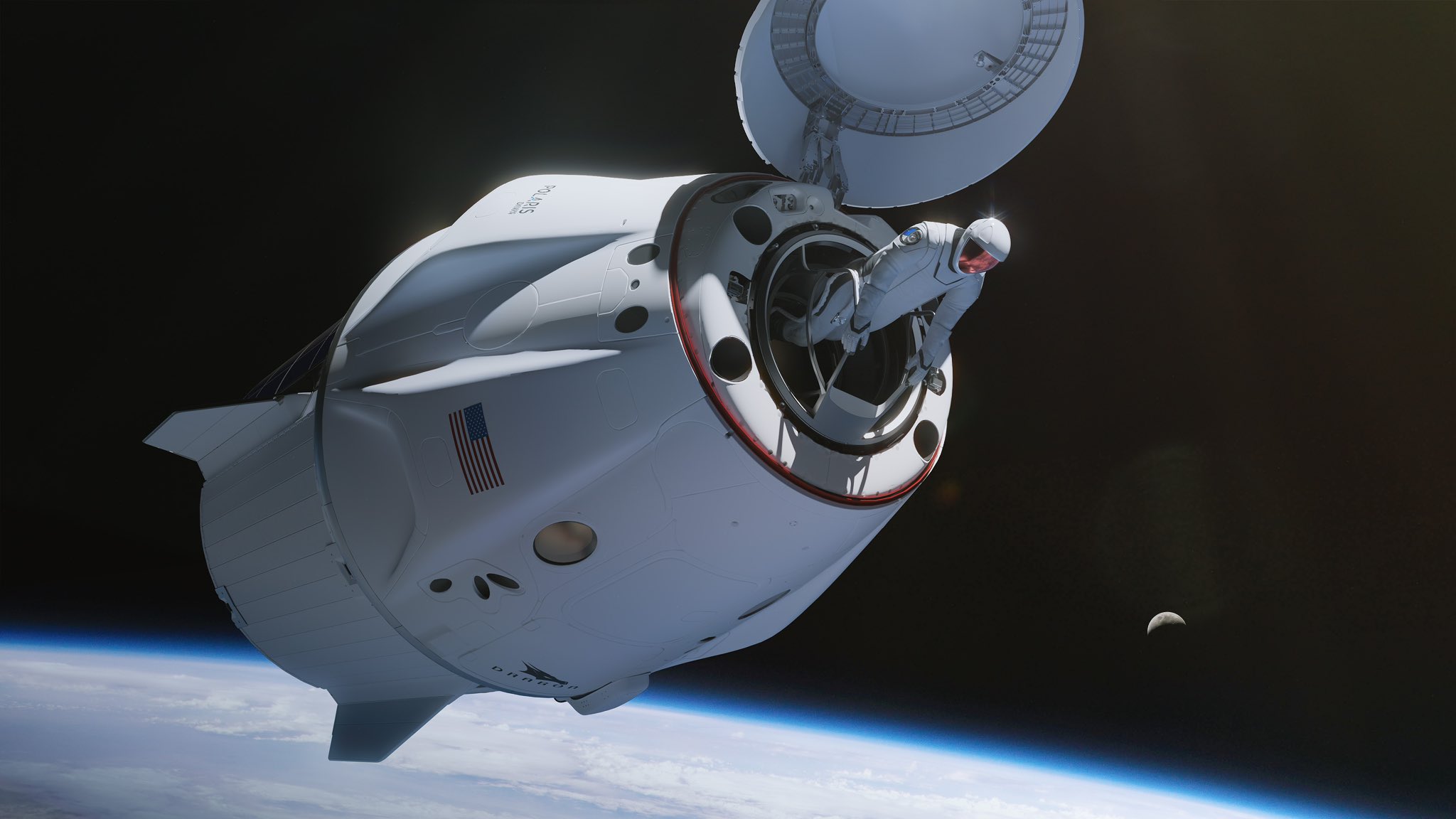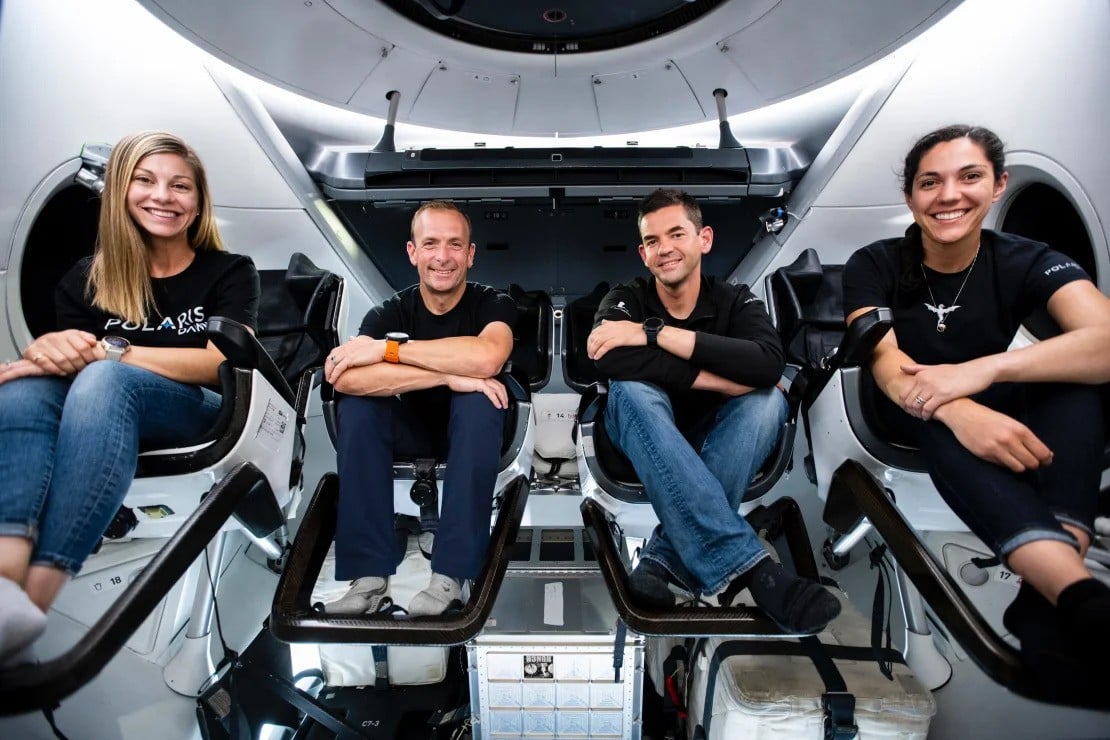In this edition:
* AMSAT OSCAR-7 50th Anniversary – A Testbed for Saving Lives
* Another Batch of CubeSatSim Kits Available Soon in AMSAT Store
* SpaceX Dragon Fires Thrusters to Boost ISS Orbit for the First Time
* SEAQUE Quantum Tech Arrives at ISS for Groundbreaking Demo
* Changes to AMSAT-NA TLE Distribution for November 15, 2024
* ARISS News
* Upcoming Satellite Operations
* AMSAT Ambassador Activities
* Satellite Shorts From All Over
The AMSAT News Service bulletins are a free, weekly news and information service of AMSAT, the Radio Amateur Satellite Corporation. ANS publishes news related to Amateur Radio in Space including reports on the activities of a worldwide group of Amateur Radio operators who share an active interest in designing, building, launching and communicating through analog and digital Amateur Radio satellites.
The news feed on https://www.amsat.org publishes news of Amateur Radio in Space as soon as our volunteers can post it.
Please send any amateur satellite news or reports to: ans-editor [at] amsat.org
You can sign up for free e-mail delivery of the AMSAT News Service Bulletins via the ANS List; to join this list see: https://mailman.amsat.org/postorius/lists/ans.amsat.org/
ANS-322 AMSAT News Service Weekly Bulletins
To: All RADIO AMATEURS
From: Radio Amateur Satellite Corporation
712 H Street NE, Suite 1653
Washington, DC 20002
DATE 2024 Nov 17
AMSAT OSCAR-7 50th Anniversary – A Testbed for Saving Lives
As we observe AMSAT OSCAR-7’s 50th anniversary as the oldest operating satellite, we should recall what may be its most noteworthy accomplishment.
OSCAR-7 was used to investigate the possibility of locating downed aircraft and disabled sea vessels by using Doppler analysis of signals from emergency location transmitters (ELT’s).
As envisioned by spacecraft engineers from the United States and Russia, the concept was to relay signals from beacon devices, ELT’s or emergency location transmitters, already installed on large and small aircraft and on ships and smaller vessels equipped with EPIRB’s or Emergency Position-Indicating Radiobeacon Stations. These one-way beacon transmitters, originally intended to be received by surface rescue parties, could also be received and transponded by a LEO spacecraft, greatly extending the rescue potential.
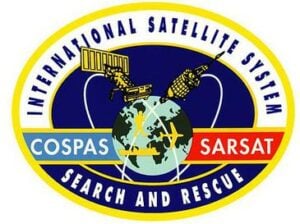
The signals could also be Doppler tracked, one-way, by processing the beacon uplink signal on-board the spacecraft. This would allow the spacecraft to find the source beacon’s location immediately. This would allow the emergency beacon to be identified and located and the position stored for immediate downlink at the next available ground station. We know it is hard to remember but this was in an era before the creation of GPS!
Scientists from the Russian COSPAS (Russian acronym for “Space System for the Search of Vessels in Distress) and the U.S. SARSAT (Search and Rescue Satellite) teams simulated ELT’s on amateur radio stations and demonstrated how receiving and relaying ELT transmissions and analyzing Doppler shift as OSCAR-7 passed overhead could accurately locate the emergency beacons.
The tests were highly successful. The COSPAS/SARSAT program went ahead and has been operational since 1982. From that time until 2021, when the program merged with others providing similar capability via LEO, MEO and GEO spacecraft, the program had saved the lives of 57,413 persons in 17,663 separate rescue events, involving downed aircraft and ships at sea.
[ANS thanks Jan King, W3GEY, AMSAT AO-7 Project Manager for the above information]
Another Batch of CubeSatSim Kits Available Soon in AMSAT Store
A new batch of fifteen CubeSatSim Kits will be available for purchase in the AMSAT Store on Wednesday, November 20, at noon US Eastern time (1700 UTC). Priced at $400 with shipping included for U.S. addresses, the CubeSatSim Kit offers a hands-on learning experience with no soldering and some assembly, making it ideal for both educational use and public demonstrations.
The CubeSatSim Kit includes:
- Fully assembled and tested PCBs (Main, Solar, and Battery Boards)
- Raspberry Pi Zero 2 with a Pi Camera and fully programmed micro-SD card, along with a fully programmed Raspberry Pi Pico WH
- AMSAT logo Remove Before Flight tag switch
- 3D printed frame, nylon screws, and nuts, with a mini screwdriver included for assembly
- Metal standoffs, stacking headers, and JST jumpers for stacking the PCBs and Pi Zero 2
- 10 solar panels with pre-soldered JST connectors and mounting tape
- BME280 sensor (pressure, temperature, altitude, humidity) and MPU6050 IMU/gyro pre-soldered
- Two 6″ SMA coax cables and two SMA antennas
The kit also comes with an instruction sheet, parts inventory, and links to online instructions. Assembly time is estimated to be under two hours, with scissors and the provided mini screwdriver.
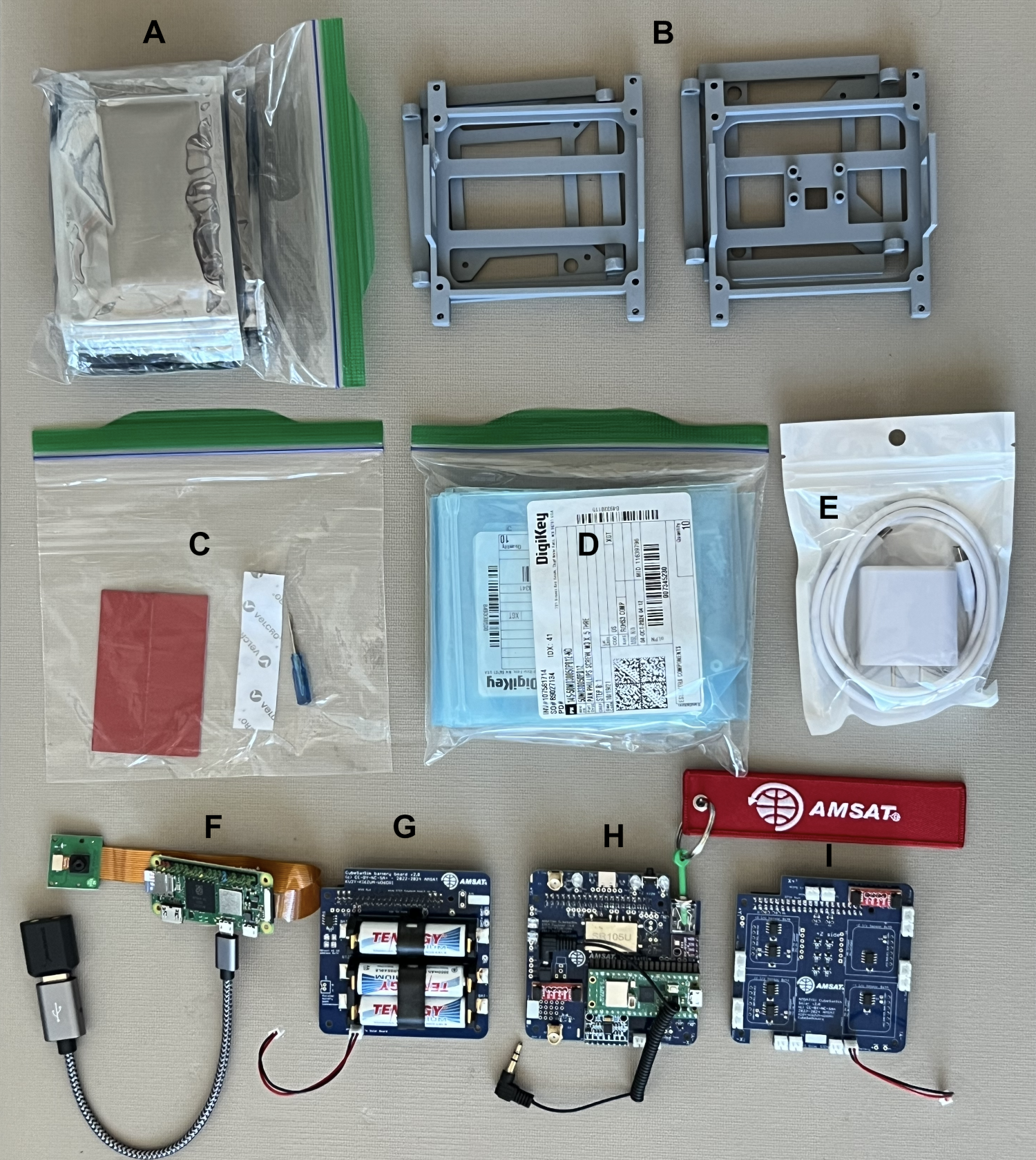
For those interested in creating their own CubeSatSim, v2.0 blank PCB sets are available at the AMSAT Store for $35. These require additional components, which can be purchased for approximately $300 using the provided Bill of Materials.
Additional resources include:
- Kit Instructions https://cubesatsim.org/kit
- Kit Videos https://cubesatsim.org/kit-videos
- Discussion Forum https://github.com/alanbjohnston/CubeSatSim/discussions
- Quick Start Guide https://cubesatsim.org/qsg
For more information or to borrow a loaner CubeSat Simulator, contact Alan Johnston, AMSAT VP Educational Relations, at ku2y [at] arrl.net.
How to Order
Kits will be sold exclusively on the AMSAT Store website.
Only U.S. shipping addresses are eligible; orders with non-U.S. addresses will be refunded and closed.
About CubeSatSim
CubeSatSim is a low-cost satellite emulator powered by solar panels and batteries. It transmits UHF radio telemetry and can be expanded with additional sensors and modules, making it ideal for educational and public demonstrations.
[ANS thanks Alan Johnston, KU2Y, AMSAT Vice President Educational Relations for the above information]
The 2024 AMSAT President’s Club coins are here now!
Help Support GOLF and Fox Plus
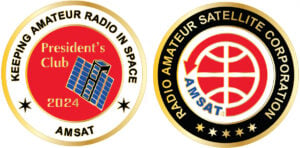 Join the AMSAT President’s Club today and help
Join the AMSAT President’s Club today and help
Keep Amateur Radio in Space!
https://www.amsat.org/join-the-amsat-presidents-club/
SpaceX Dragon Fires Thrusters to Boost ISS Orbit for the First Time
For the first time, SpaceX’s Dragon spacecraft successfully raised the orbit of the International Space Station (ISS) by firing its thrusters. The orbital boost marks a significant milestone in Dragon’s capabilities and comes as part of SpaceX’s 31st commercial resupply mission to the ISS. The mission, which launched on November 4, delivered a Dragon cargo vehicle which docked with the station the following day. On November 8, the vehicle conducted an orbit-raising maneuver, stabilizing the ISS’s position in low-Earth orbit.
Orbit-raising maneuvers are routine for the ISS, which requires regular boosts to counteract orbital decay caused by Earth’s gravity. Until now, this task has been handled mainly by Russia’s Soyuz and Progress vehicles, alongside occasional boosts from other spacecraft. With Dragon now performing such maneuvers, the U.S. spacecraft has added a critical capability, especially significant as NASA prepares for the eventual decommissioning of the ISS. The data gathered from today’s maneuver will aid in the development of SpaceX’s future ISS deorbit vehicle, known as the U.S. Deorbit Vehicle, which NASA has contracted to guide the station into the Pacific Ocean upon its retirement.
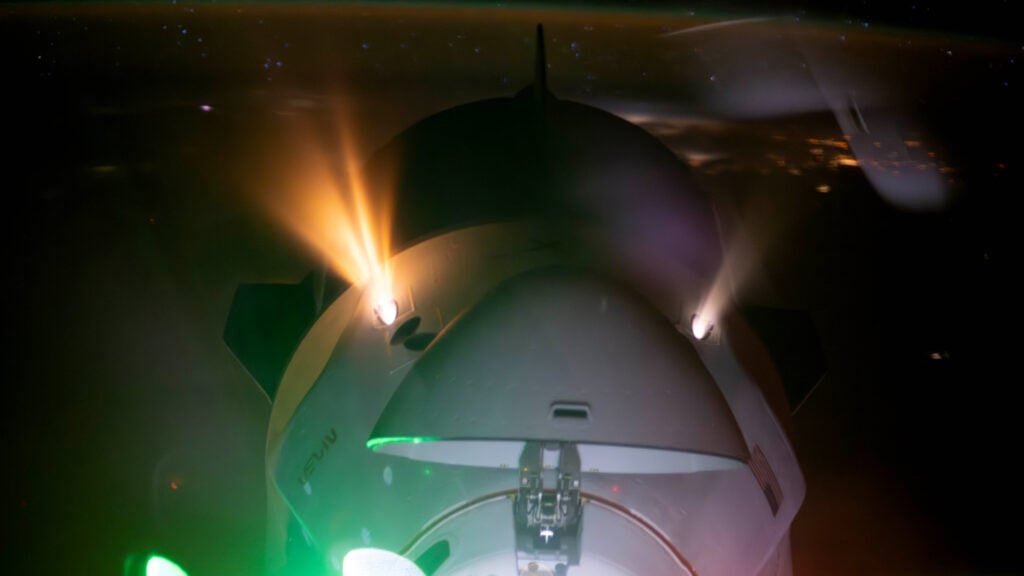
This recent success by Dragon is not the first instance of a U.S.-made spacecraft boosting the ISS. In 2022, NASA tested a similar maneuver using a Northrop Grumman Cygnus cargo vehicle. However, the data collected from Dragon’s maneuver holds unique importance, as it directly informs the planning of the ISS’s controlled deorbit mission. The spacecraft, which has been continuously occupied for nearly 25 years, is expected to remain operational until around 2030, when the costs and maintenance demands of the aging structure will likely lead to its retirement.
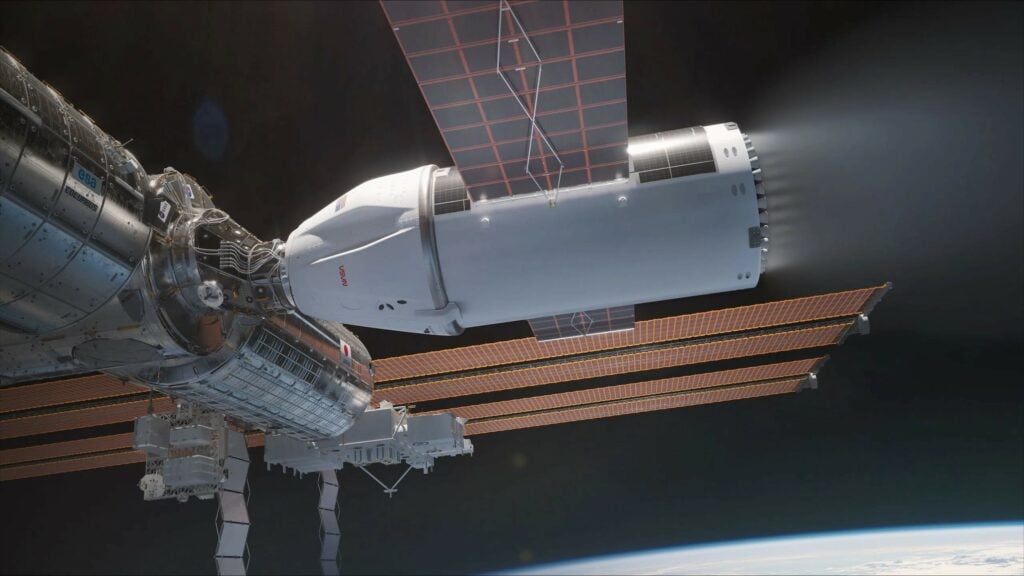
The success of Dragon’s reboost maneuver also underscores the U.S.’s reduced reliance on Russian spacecraft to maintain ISS operations. Despite global political tensions, notably since Russia’s 2022 invasion of Ukraine, the U.S.-Russian partnership on the ISS has persisted. However, Dragon’s demonstrated ability to perform reboosts offers NASA an alternative if needed. Since Dragon began launching U.S. astronauts in 2020, SpaceX has provided NASA with a reliable launch option from American soil, and now it has proven capable of supporting the station’s orbit, a role essential to the ISS’s long-term stability.
[ANS thanks Josh Dinner, Space.com for the above information]
SEAQUE Quantum Tech Arrives at ISS for Groundbreaking Demo
The Space Entanglement and Annealing QUantum Experiment (SEAQUE) has officially arrived at the International Space Station (ISS), delivered aboard NASA’s SpaceX CRS-31 mission. The SpaceX Dragon capsule docked with the ISS on November 4th, carrying over 6,000 pounds of scientific investigations and cargo, including SEAQUE. Planned for installation on the Nanoracks Bishop airlock, SEAQUE represents an important step forward in building a global quantum communications network.
Quantum computers promise computation speeds that are exponentially faster than conventional computers, and distributed quantum sensors may lead to new understandings of Earth and our place in the universe by measuring minute changes in gravity. However, to fully harness these abilities, a dedicated communication network must be established, capable of linking quantum computers and sensors regardless of their location. SEAQUE’s experiment aims to prove the viability of orbiting nodes that can securely transmit and receive quantum data to and from the ground via free-space optical communications.
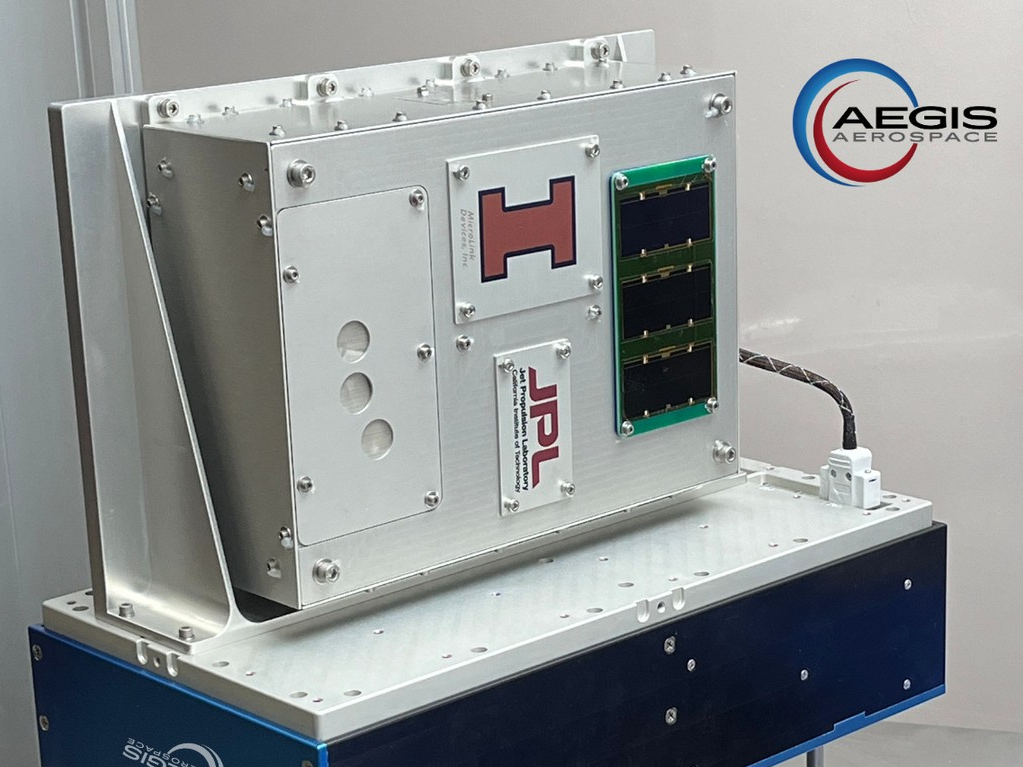
“SEAQUE will demonstrate a new and never-before-flown entanglement source based on integrated optics,” said Paul Kwiat, principal investigator at the University of Illinois Urbana-Champaign. He emphasized that the technology is pivotal for scalable global networks, as manual adjustments would be impractical when managing hundreds of quantum nodes spread across continents. Makan Mohageg, SEAQUE co-investigator from NASA’s Jet Propulsion Laboratory (JPL), reinforced that SEAQUE’s success would pave the way for future, widespread quantum networks.
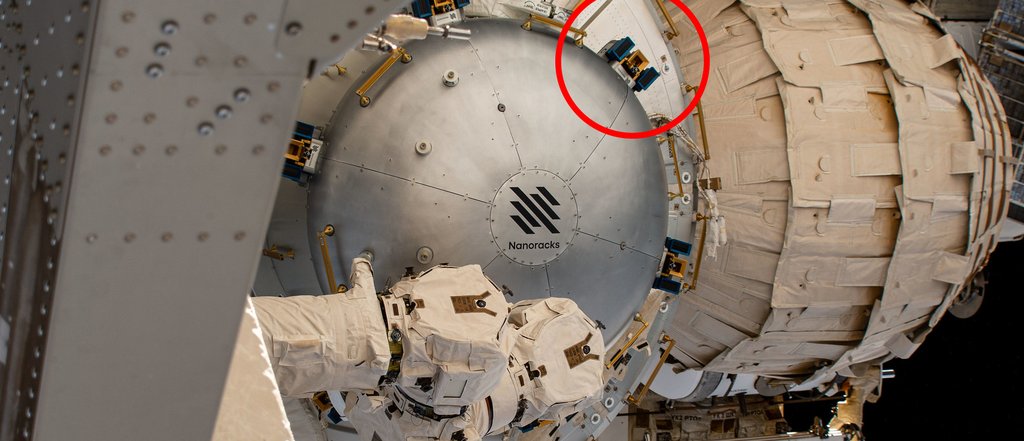
The SEAQUE mission reflects a truly international effort, including experts and students from the University of Illinois Urbana-Champaign, the University of Waterloo in Ontario, Canada, the National University of Singapore, and commercial partners such as AdvR, Inc., and Nanoracks. Funded by NASA’s Biological and Physical Sciences Division, SEAQUE is expected to drive breakthroughs in secure quantum communications, establishing a foundation for future advancements in long-distance data sharing.
[ANS thanks the NASA Jet Propulsion Laboratory for the above information]
Need new satellite antennas?
Purchase an M2 LEO-Pack from the AMSAT Store!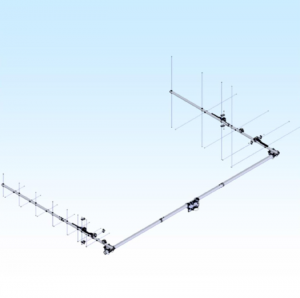 When you purchase through AMSAT, a portion of the proceeds goes towards
When you purchase through AMSAT, a portion of the proceeds goes towards
Keeping Amateur Radio in Space.
https://amsat.org/product-category/hardware/
Changes to AMSAT-NA TLE Distribution for November 15, 2024
Two Line Elements or TLEs, often referred to as Keplerian elements or keps in the amateur community, are the inputs to the SGP4 standard mathematical model of spacecraft orbits used by most amateur tracking programs. Weekly updates are completely adequate for most amateur satellites. TLE bulletin files are updated daily in the first hour of the UTC day. New bulletin files will be posted immediately after reliable elements become available for new amateur satellites. More information may be found at https://www.amsat.org/keplerian-elements-resources/.
The following satellites have been removed from this week’s AMSAT TLE distribution:
Binar 2 NORAD Cat ID 60956 Decayed from orbit on or about 09 November 2024
[ANS thanks AMSAT Orbital Elements page for the above information]
ARISS NEWS
Amateurs and others around the world may listen in on contacts between amateurs operating in schools and allowing students to interact with astronauts and cosmonauts aboard the International Space Station. The downlink frequency on which to listen is 145.800 MHz worldwide.
+ Recently Completed Contacts
Bishop O’Connell HS, Arlington, VA, telebridge via VK4ISS
The ISS callsign was NA1SS
The scheduled crewmember was Nick Hague
The ARISS mentor was AA6TB
Contact was successful: Fri 2024-11-15 18:06:21 UTC
Watch the Livestream at https://youtube.com/live/qlIufW_FCBU
Cottam Scouts, Cottam, ON, Canada, telebridge via IK1SLD
The ISS callsign was OR4ISS
The scheduled crewmember was Sunita Williams KD5PLB
The ARISS mentor was VE6JBJ
Contact was successful: Sat 2024-11-16 18:17:04 UTC
+ Upcoming Contacts
Erie Migration District School, Kingsville, ON, Canada, telebridge via IK1SLD
The ISS callsign is presently scheduled to be OR4ISS
The scheduled crewmember is Sunita Williams KD5PLB
The ARISS mentor is VE6JBJ
Contact is go for: Mon 2024-11-18 16:41:47 UTC
Aznakaevsky district resp. Tatarstan, Russia, direct via TBD
The ISS callsign is presently scheduled to be RSØISS
The scheduled crewmember is Ivan Vagner
The ARISS mentor is RV3DR
Contact is go for Tue 2024-11-19 16:05 UTC
Center for the Development of Children and Youth Creativity in the City of Pugachev, Saratov Region, Russia, direct via TBD
The ISS callsign is presently scheduled to be RSØISS
The scheduled crewmember is Aleksey Ovchinin
The ARISS mentor is RV3DR
Contact is go for Wed 2024-11-20 15:15 UTC
Escola Secundária Rafael Bordalo Pinheiro, Caldas da Rainha, Portugal, direct via CS5SS
The ISS callsign is presently scheduled to be OR4ISS
The scheduled crewmember is Don Pettit KD5MDT
The ARISS mentor is IKØUSO
Contact is go for: Fri 2024-11-22 16:37:40 UTC
Amur State University, Blagoveshchensk, Russia, direct via TBD
The ISS callsign is presently scheduled to be RSØISS
The scheduled crewmember is Alex Gorbunov
The ARISS mentor is RV3DR
Contact is go for: Thu 2024-11-21 11:25 UTC
The crossband repeater continues to be active (145.990 MHz up {PL 67} & 437.800 MHz down). If any crewmember is so inclined, all they have to do is pick up the microphone, raise the volume up, and talk on the crossband repeater. So give a listen, you just never know.
The ARISS SSTV Series 22 event is now underway from Mon 2024-11-11 11:50 UTC to Mon 2024-11-18 16:00 UTC (times are approximate).
As always, if there is an EVA, a docking, or an undocking; the ARISS radios are turned off as part of the safety protocol.
Note, all times are approximate. It is recommended that you do your own orbital prediction or start listening about 10 minutes before the listed time.
The latest information on the operation mode can be found at https://www.ariss.org/current-status-of-iss-stations.html
The latest list of frequencies in use can be found at https://www.ariss.org/contact-the-iss.html
[ANS thanks Charlie Sufana, AJ9N, one of the ARISS operation team mentors for the above information]
Upcoming Satellite Operations
Guyana: Aldir, PY1SAD (ZZ1M), operates from Georgetown as 8R1TM between Oct. 12 and Nov. 24 on 160-10m (CW, SSB, digital modes) and via satellites. QSL via LoTW, eQSL, qrz.com. (From DXNL 2427 – October 9, 2024
A growing number of satellite rovers are currently engaged in sharing their grid square activations on https://hams.at. By visiting the website, you gain easy access to comprehensive information about the operators responsible for activating specific grid squares. Additionally, you have the ability to assess the match score between yourself and a particular rover for a given pass, while also being able to identify the upcoming satellite passes that are accessible from your location.
[ANS thanks Ian Parsons, K5ZM, AMSAT rover page manager, for the above information]
AMSAT Ambassador Activities
AMSAT Ambassadors provide presentations, demonstrate communicating through amateur satellites, and host information tables at club meetings, hamfests, conventions, maker faires, and other events.
AMSAT Ambassador Clint Bradford, K6LCS, says,
“Think a 75-minute presentation on “working the easy satellites” would be appropriate for your club or event? Let me know by emailing me at k6lcsclint (at) gmail (dot) com or calling me at 909-999-SATS (7287)!”
Clint has NEVER given the exact same show twice: EACH of the 150+ presentations so far has been customized/tailored to their audiences.
Yuma HAMCON – February 20th thru 22nd, 2025
Yuma, AZ
N1UW
[ANS thanks Bo Lowrey, W4FCL, Director – AMSAT Ambassador Program, for the above information]
Want to fly the colors on your own grid expedition?
Get an AMSAT car flag and other neat stuff from our Zazzle store!
25% of the purchase price of each product goes towards Keeping Amateur Radio in Space
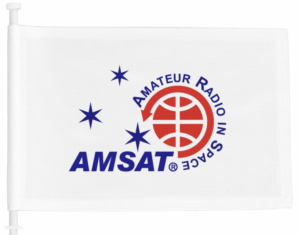 Keeping Amateur Radio in Space
Keeping Amateur Radio in Space
https://www.zazzle.com/amsat_gear
Satellite Shorts From All Over
+ SpaceX is set for its sixth Starship test flight on November 18th, marking the first mission without regulatory delays following FAA approval for both Flights 5 and 6. Flight 6 will be similar to Flight 5, including a suborbital launch and splashdown of the upper stage in the Indian Ocean, with a key difference being an attempted relight of a Raptor engine during coast, revisiting a goal from Flight 3. This test also includes new experiments with the thermal protection system, including sections without heat shield tiles to gather data on ship-catching configurations. SpaceX aims to catch the Super Heavy booster again, making improvements to its propulsion and structural systems after facing near failures and unexpected damage in Flight 5. The launch will depart in the afternoon to achieve a daylight splashdown, while testing higher angles of descent to simulate future landing profiles. Flight 6 will conclude the Block 1 version of Starship, with upgraded features planned for Flight 7, as SpaceX targets a faster launch cadence to support future NASA missions and lunar landings. (ANS thanks Spaceflight Now for the above information)
+ NASA’s Parker Solar Probe recently completed its seventh and final flyby of Venus, setting it on a course to approach within 3.8 million miles of the sun’s surface—closer than any human-made object in history. This maneuver, crucial for tightening the probe’s orbit, marks a significant step in its mission to study solar mysteries such as the sun’s extremely hot corona. Described by Nour Raouafi as “almost landing on a star” and compared to the 1969 moon landing, the achievement underscores its importance to humanity. The spacecraft’s gravity assists from Venus have not only propelled it closer to the sun but also provided unique data about Venus itself, revealing surface features through its WISPR camera and unexpected details like potential chemical differences. During the most recent flyby, Parker came within 233 miles of Venus’ surface to further study these surface properties. On December 24th, the probe will achieve its closest solar encounter, reaching a speed of 430,000 miles per hour, with mission control anticipating confirmation of its success by December 27th. (ANS thanks Space.com for the above information)
+ Arianespace has announced that the second flight of Europe’s Ariane 6 rocket, its first commercial mission, has been rescheduled from December 2024 to no earlier than mid-February 2025. This mission will carry the CSO 3 reconnaissance satellite for the French military and marks the first Ariane 6 launch to be overseen by Arianespace. Initially expected to launch in December following the Vega C rocket’s return to flight, the schedule changed after analysis of an issue during the Ariane 6’s debut in July. The delay stemmed from a temperature measurement anomaly that prevented the upper stage’s auxiliary power unit (APU) from starting, now corrected with a software update. Both the rocket’s core and upper stages are still in production and are set to be transported soon to French Guiana for launch preparation. Arianespace has assured that this delay will not impact future missions, with plans to conduct six Ariane 6 launches in 2025. (ANS thanks SpaceNews for the above information)
+ AST SpaceMobile has recently deployed five massive BlueBird satellites in low Earth orbit, each with a record-breaking 693-square-foot communications array, marking the start of the company’s space-based cellular network. These satellites are brighter than most objects in the night sky, presenting significant challenges for astronomers by obstructing observations. AST aims to establish the first cellular broadband network directly accessible by cell phones, with plans to expand its constellation to over 100 satellites. The rapid increase in large satellites, like those of AST and competitors such as SpaceX and Amazon, has raised concerns about space debris and environmental impact. A group of experts has urged the FCC to reconsider satellite environmental exemptions, fearing an irreversible clutter of space. This surge in satellite launches is not only reshaping communications but also sparking debate on preserving the accessibility of space for scientific exploration. (ANS thanks Gizmodo for the above information)
Join AMSAT today at https://launch.amsat.org/
In addition to regular membership, AMSAT offers membership to:
* Societies (a recognized group, clubs or organization).
* Primary and secondary school students are eligible for membership at one-half the standard yearly rate.
* Post-secondary school students enrolled in at least half-time status shall be eligible for the student rate for a maximum of 6 post-secondary years in this status.
* Memberships are available for annual and lifetime terms.
Contact info [at] amsat.org for additional membership information.
73 and remember to help Keep Amateur Radio in Space!
This week’s ANS Editor, Mitch Ahrenstorff, ADØHJ
mahrenstorff [at] amsat.org

